Note-taking methods
If your in-class notes are messy, unorganized, and unclear at first glance, you’re not going to get much use out of them. This has nothing to do with how neat your handwriting is — it’s all about how your notes are structured.
One of the most effective ways to remember (and understand) what you are learning in class is to take effective notes in the classroom.
WHY ARE EFFECTIVE NOTE TAKING SKILLS IMPORTANT?
Better notes will help you remember concepts, develop meaningful learning skills, and gain a better understanding of a topic. Effective notes will even lead to less stress when test time comes around!
Learning how to take better study notes in class helps improve recall and understanding of what you are learning because it:
Ensures you are actively listening to what the teacher is saying
Requires you to think about what you are writing
Helps you make connections between topics
Serves as quality review material for after class
Using different note taking strategies is important, especially as you progress through high school and transition to college or university. There are several note taking techniques you can use to start taking better notes in class.
TRY THESE 5 METHODS TO FIND THE BEST NOTE TAKING METHOD FOR YOU!
The Cornell note taking method helps organize class notes into easily digestible summaries. This method is effective because the main points, details, study cues, and summary are all written in one place.
The paper is divided into 3 sections: a 2.5” margin to the left, a 2” summary section on the bottom, and a main 6” in-class note section.
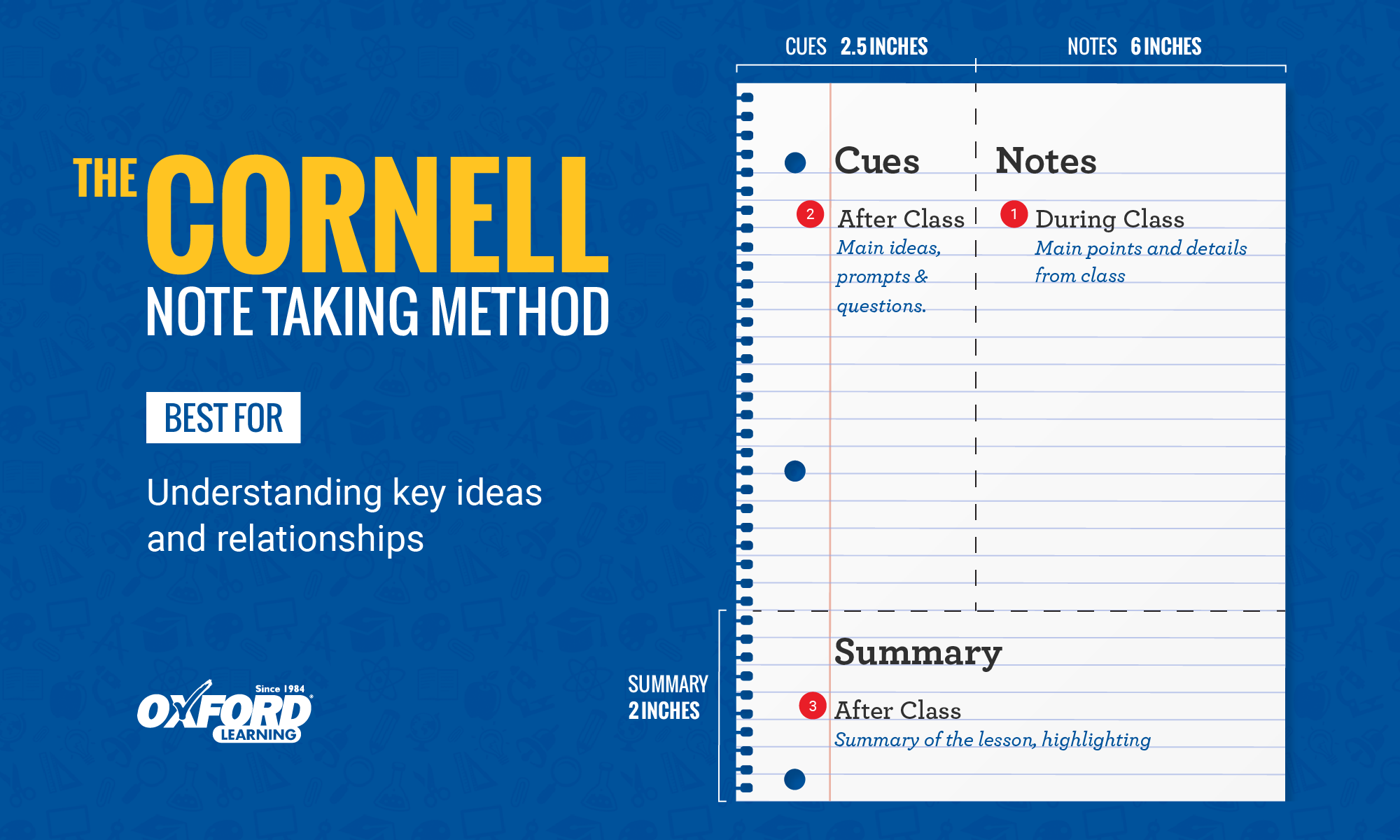
The Mapping note taking method is a more visual way to organize your class notes. This technique is useful when learning about relationships between topics.
The page is organized by topic. The main topics branch out into subtopics with detailed information about each.
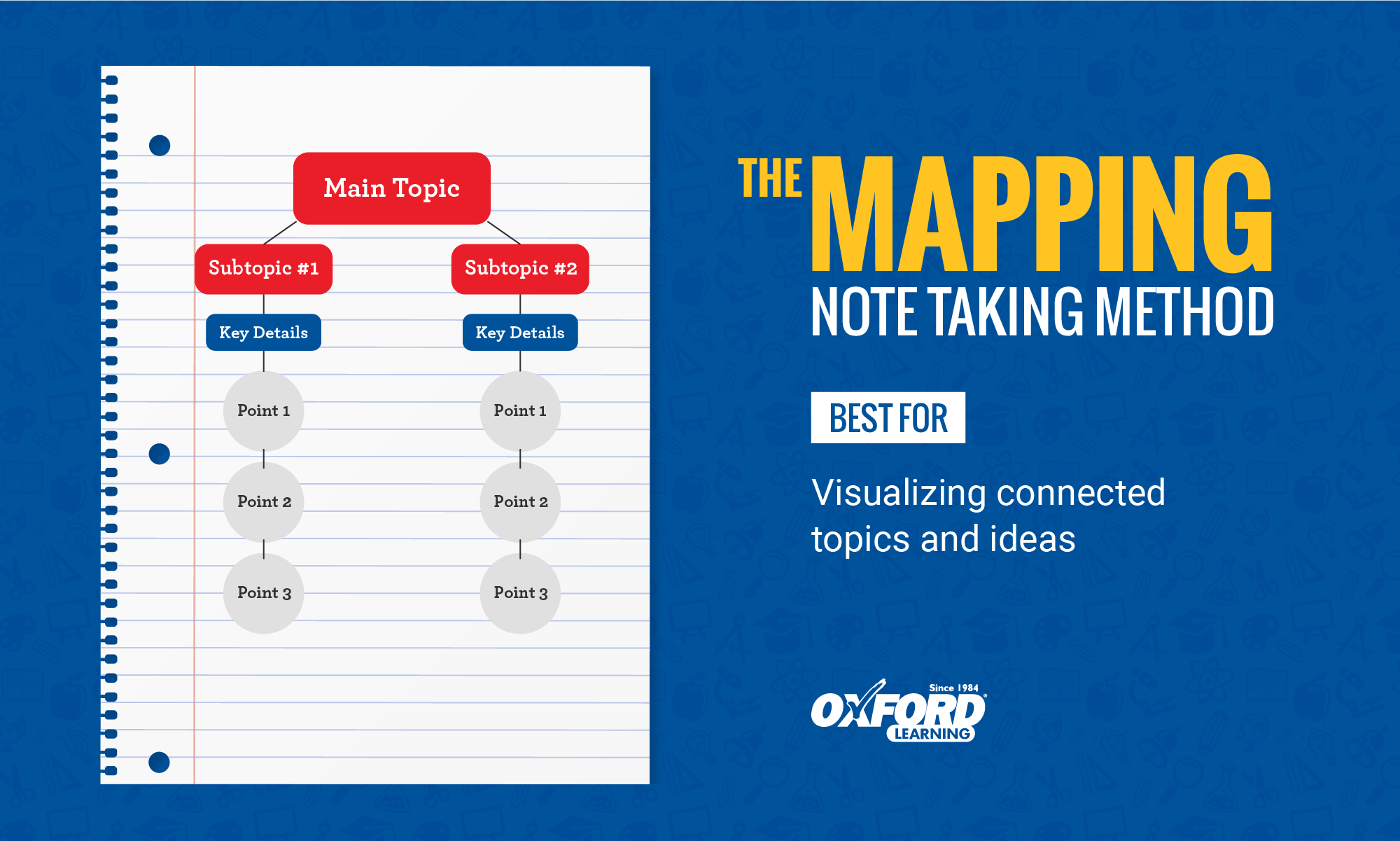 ч
ч
The Outlining note taking method uses headings and bullet points to organize topics. This method is most useful when learning about topics that include a lot of detail.
Each section starts with a heading of the main topic. Each subtopic and supporting fact is written underneath the proper heading.
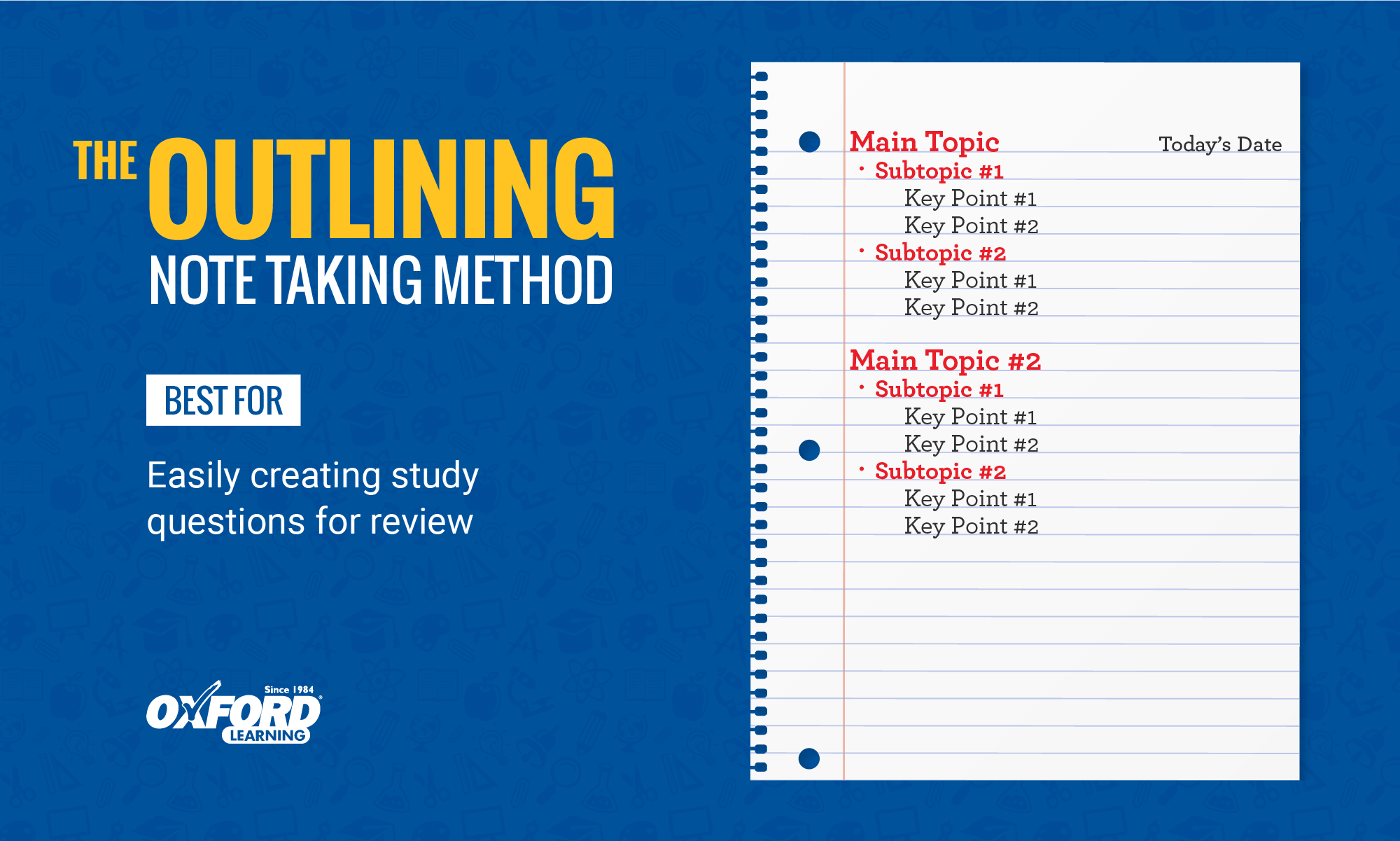
Charting note taking method uses columns to organize information. This method is useful for lessons that cover a lot of facts or relationships between topics.
The page is divided into columns labeled by category. The details of each category are filled out in the rows below.
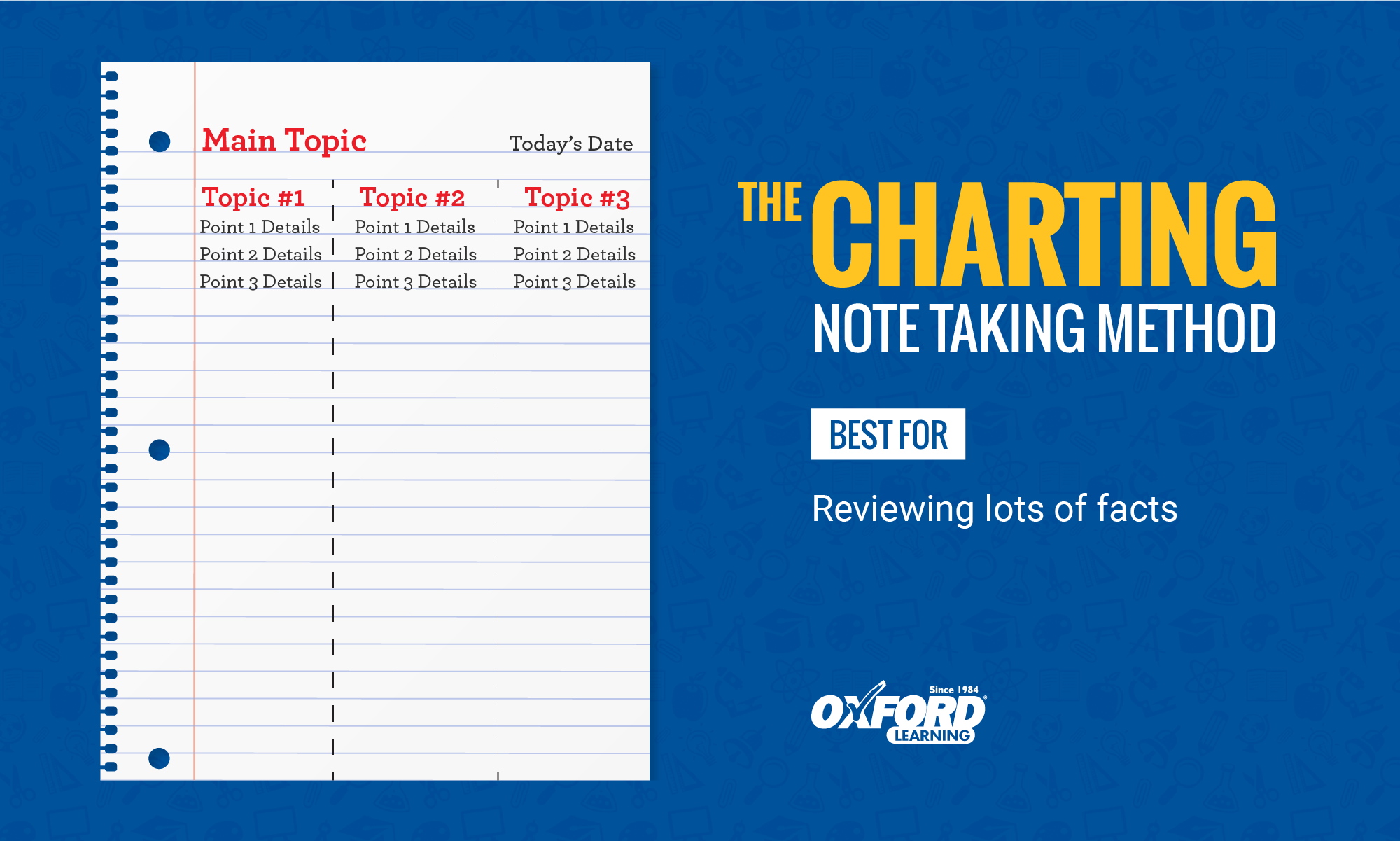
The Sentence note taking method is simply writing down each topic as a jot note sentence. This method works well for fast paced lessons where a lot of information is being covered.
Each line on the page is a new and separate topic. To organize your notes even more, you can use headings for each main topic.
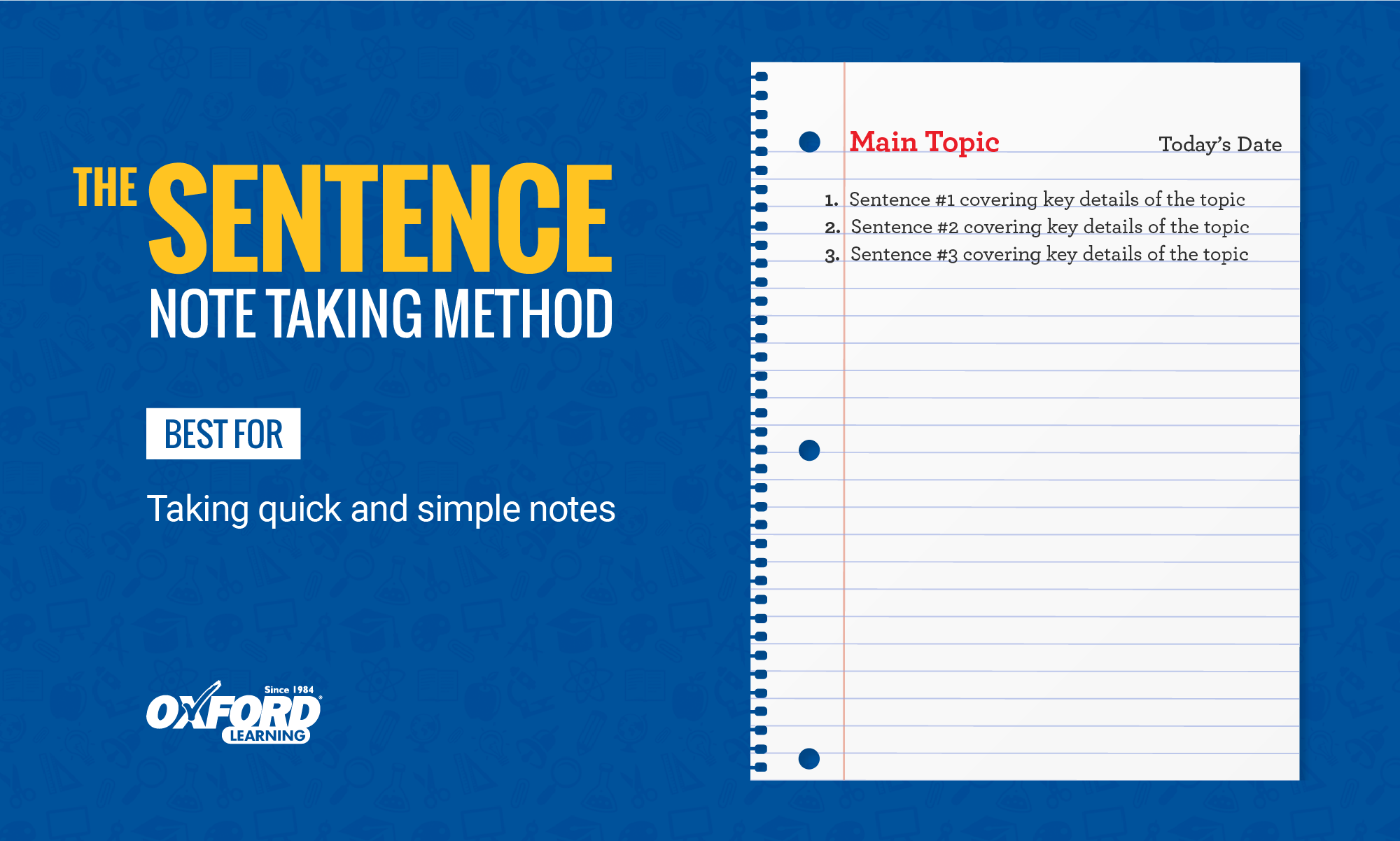
Taking organized and thoughtful notes can help improve your understanding and recall of what you have learned in class. Try these methods of note taking in your next classes and see which one works best for you!
��
This information was taken from the following web source:
"Taking notes can be overwhelming and stressful. But, with the right note taking methods, it's easy to learn how to take good notes that will ensure easy studying and strong test results".��Please find the link bellow
��
��